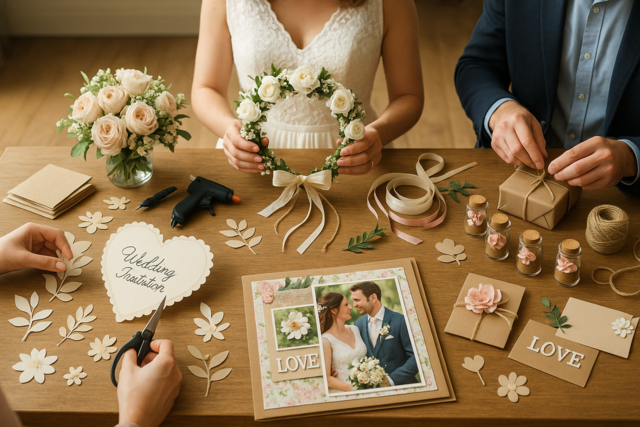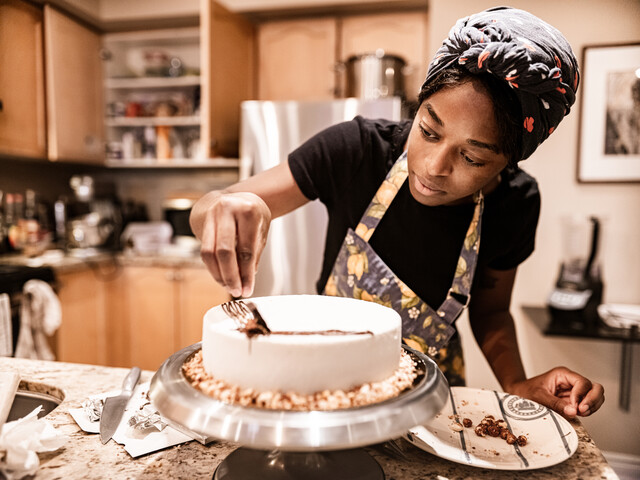For some people, decorating is intimidating: choosing the right color, furniture, and accents from a plethora of choices to achieve a desired look can be overwhelming. However by working through the fundamental elements of a decorating project with a particular theme in mind, any room can be styled into an aesthetically pleasing space.
In this article, you'll learn any room and where to get started on any project. You'll learn about:
-
Gathering inspiration
-
Determining a room's usage
-
Working through the floor plan
-
Adding just the right amount of light
-
Staying on top of a budget and timeline
GATHERING INSPIRATION: WHAT BEST EXPRESSES YOUR STYLE?
Inspiration comes from the world around us. Look for photos, objects, textures, paint samples, and pieces of fabric that you love. Save images in a digital or physical folder, whatever works best for you.
Once you've amassed a decent sized collection, find similarities and underlying style elements to determine a personal style.
Here's a "cheat sheet" to help articulate element choices:
-
Color palettes: bold, rich tones; bright shocking colors; neutrals; warm or cool tones; stripes; patterns
-
Furniture lines: sleek and simple; rounded and commanding; intricate detailing
-
Overall room wow factors: surprising elements; one large impressive focal point
-
Textures: coarse; smooth; shiny; soft
-
Lighting: bright; candlelit; colored lights
-
Miscellaneous descriptions: delicate; organized clutter; masculine; a particular decade; cozy; durable; whimsical; plush; preppy
Are you drawn toward nautical elements or lots of lace and intricate details? Do you choose images with sparse rooms? Assign names to what you steer towards, like "beach vacation," "delicate romance," and "clean-cut modern." Don't worry if you end up with a long list, you can always combine styles in a room, for example... a romantic modern bedroom with a beach feel.
A final option, especially in a home filled with people of varying styles, is to decorate each room in a particular style, but include an underlying theme to retain cohesiveness within the home. For example, you are drawn to a sparse, modern style with a neutral color palette, but your spouse likes a traditional style with rich colors. Decorate your individual spaces primarily in your styles, but use elements of the other's style. In your modern home office, include a traditional hutch for file storage, painted in a muted red.
You can also agree on a third style then infuse those elements throughout the rooms, for example adding retro style touches in your traditionally styled living room and modern styled kitchen.
*CONFIDENCE CHECK: Still afraid you're creating a decorating nightmare? Don't worry, this article is designed to build your confidence in choosing complementary decorating elements. You'll encounter sections entitled "Surprising Fit" where we'll discuss how seemingly opposite styles work well together.
ROOM USAGE: WHAT FUNCTION WILL THE SPACE SERVE?
No matter how beautifully decorated a room is, it fails its purpose if it lacks functionality. Functionality comes from the furniture type and arrangement, lighting, and even colors.
Approaching functionality with a checklist helps ensure all bases are covered:
1) Define what the room will be used for: entertaining, sleeping/relaxing, entryway, etc.
2) Analyze what has been working, what doesn't work, and what needs fixing.These items will be the highlighted functionality points. A decorating project won't be complete without addressing these issues. For example, the current couch is too small for the whole family to lounge on, storage is sparse in a perpetually messy office, or the speakers need adjustment to listen to music in both the kitchen and dining room.
3) For some rooms, deciding on a color scheme in consideration with functionality will help achieve a certain mood. Color psychology reveals colors play a role in elevating particular moods. Corals and vibrant oranges are energizing, buttercup yellow is cheerful, while grays and taupes can be calming. Decide on the desired moods for each room and choose colors accordingly.
Once these three items are decided upon, it's time to get to work arranging furniture and choosing lighting.
*DECORATING TIP If you really love a certain color, consider adjusting the tone to be more aligned with the mood you'd like to achieve. A bright red bedroom might be too energizing for some people to sleep soundly, but a deeper red might be just the right shade to encourage sweet dreams.
FLOOR PLAN: HOW WILL EVERYTHING FIT?
Addressing the flow of a room requires the correct size and placement of furniture. There are two ways to determine how the flow will work with the furniture arrangement: move everything around, or, the easier option, make a diagram.
1) Grab some graph paper, a ruler, pencil, and measuring tape. Measure the room.
2) Determine the scale conversion, then draw out the overhead dimensions of the room on the graph paper, as if you were peering into the room from the ceiling. An easy conversion for smaller rooms is 1 inch equals 1 foot, for larger rooms utilizing the graph's paper blocks keep everything on one page, for example 2 squares equals 1 foot. Regardless of the chosen scale, be sure to apply the same scale to the furniture, windows, and doorways.
3) Annotate the location and dimensions of doorways and windows within the graphed room to include the arc of swinging doors. Also note the window height from the floor.
4) Next, measure all the furniture you plan on keeping in the room. Feel free to consider pieces from other rooms that might fit better in the room-in-progress. Draw out dimensions on a piece of graph paper, then carefully cut them out. Remember, only draw overhead viewings of each piece. Keep in mind expansive space, that is the space that furniture "grows" into: recliners, opened desk drawers, and pulled out chairs around a table.
5) Lay the furniture pieces on the graphed room and feel free to rearrange. Keep in mind walking paths through the room, seating for optimal conversation, and the previously mentioned expansive space. This step helps determine how big of a couch can be purchased, the optimal sized rug, or discover an old dining room table will work perfectly as an oversized office desk.
The same method of graphing can be utilized to envision furniture around larger windows or a unique architectural focal point. Simple include the height measurements of every item, and depict the graphed image from a side view. It should resemble the view from standing in front of the wall in question.
Drawing out a floor plan will save time and energy in physically moving heavy items. With the ease of moving paper pieces you might even discover a new furniture arrangement, stay open to possibilities!
*DECORATING TIP Many people swear by the ancient Chinese practice of Feng Shui. The concept requires arranging furniture and objects to manipulate positive and negative energies (Chi) within a house. From a practicality stand point, the idea of Chi flow goes hand in hand with the movement of bodies, or how an individual will navigate through and within rooms.
LIGHTING: HOW MUCH LIGHT DO YOU WANT?
Lighting within a room is important for both functionality and setting a mood. Bright lights in a kitchen are practical while softer lights in a bedroom are ideal, and the option to adjust lights in a family room helps boost the room's functionality. Light comes from four main sources: overhead electric and wall sconces, lamps, candles, and windows. Each of these sources can be manipulated to a certain extent to take advantage of its lighting capacity and make up for shortfalls in weaker sources.
- Overhead electric lights and wall sconces are built-in to a home's wiring system. They can be embedded into the ceiling, drop down like a chandelier, or be attached to a ceiling fan. The light can be adjusted through lightbulbs (softer or brighter, even colored), shades (in drop down wiring), and by installing dimmer switches.
- Lamps offer flexibility in choosing a room's light concentration. Specialized task lamps or strips are perfect for reading nooks or underneath kitchen cabinets. Switching out lamp shades and bulbs adjusts the brightness of the lamp's light as well as plays a role in the overall decorating style. The only limits with lamps are the number of surfaces to place them upon, and plugs to energize them.
- Candles provide a great ambiance solution for a room with bright light. A collection of votives as a centerpiece and scattered around a room create a soft light perfect for entertaining. Keep in mind fire safety when lighting lots of candles and be sure to place lit candles on sturdy surfaces away from flammable objects and fabrics.
- Windows are natural light distributors. Curtains and blinds serve to decorate and decrease the amount of light and/or view into a room. When decorating a room note what direction the windows face and if any trees or bushes block the natural light. From there, it's easy to decide if heavier curtains are a must to block morning light in a bedroom, or sheer drapes and an extra lamp will boost an office's functionality. Other considerations include opaque coverings in bathrooms (they don't actually manipulate the light but do boost privacy), the ability to block sun glare on TV and computer screens, and maximizing natural light to help decrease the electric bill.
Utilize all four sources of light for the utmost decorating advantage. If a budget restricts big changes like installing a new overhead light or window, make easier changes to the other sources like new lightbulbs or lighter curtains.
Light itself might not seem like a large component in decorating as attention usually goes towards an actual lamp or curtain fabric, however utilizing light properly will boost the room's functionality and ambiance. In the end, it showcases the room's overall style.
BUDGET MONEY AND TIME: HOW MUCH OF EACH CAN YOU SPEND?
After understanding the fundamentals of designing, turning inspiration into a beautifully styled room is a matter of money and time. For now, determine the room's set budget and work within the constraints.
1) What is the maximum budget? Write it down. Within the maximum budget, allocate funds for each portion of decorating: painting, furniture, storage, final touches, lighting, etc. Always consult the budget, but maintain flexibility within the allocations (See #4).
2) Address the functionality issues first and foremost. What, if anything, needs to be purchased or fixed? How much will it cost?
3) Shop around for objects, furniture, fabrics, and everything else to achieve the room's overall style. Avoid purchasing big ticket items on first visits, merely browse and make notes. If you're still thinking about that dresser a week later, it's the one.
4) Sacrifice when applicable. Changing the look of a room doesn't necessarily mean spending a lot of money, however sometimes it's worth purchasing a sturdy, quality piece over a flimsy one. Give and take rationally. For example, in a home office, a heavy, well-made desk can take a large chunk of the budget, but will last for many years, and more importantly, become a beloved piece. Make the large purchase then scrimp on other areas such as cheaper storage boxes and painting existing shelves instead of purchasing new ones.
5) Don't feel pressured to buy everything at once. Extend a decorating project over a few weeks or months. Take care of cheaper changes right away while saving for larger purchases, or work on the inspiration and planning phases while saving designated decorating money.
Decorating on a budget doesn't have to feel restraining: simply approach the budget rationally and within limits for each area in mind. Look for money saving opportunities and don't be afraid to get dirty fixing or building something. Cutting costs may mean devoting more time to the overall project, which is another constraint some people find difficult to deal with when decorating.
It's not a race to complete any decorating project, however having an unfinished bedroom for months on end can become frustrating. Plan a project timeline by annotating each phase of the decorating project to include estimated hours. Then consult a calendar and schedule each task.
A few steps from a project timeline can resemble this:
1) Measure and arrange office floor plan. Time: 3 hours, this Saturday morning.
2) Determine color scheme and purchase paint supplies. Time: 2 hours (includes driving to store). Tuesday after work.
3) Empty room, paint walls and book shelves. Time: 8 hours, next Saturday, all day.
The more specific in your task descriptions, the better. Also, don't be afraid to break down larger tasks even further, for example spending two mornings instead of one day painting. Finally, use actual dates for better scheduling, and include "catch up" days is your schedule is prone towards fluctuating.
For go-getters, finding time to check off an item prior to its scheduled date helps moves a decorating project along. However don't rush through tasks simply to check off the boxes. Do tasks correctly, especially painting, fixing, or building projects, even if it means spending more time than estimated. Doing it correctly the first time saves the trouble of going back and spending more time correcting errors.
Finally, be realistic about the project timeline, and figure out ways to stick with it. Some ideas include planning an unveiling party for a family room or kitchen, or schedule a pampering day as a reward for completing a bedroom or home office. Looking forward to showing off your hard work or basking in relaxation can be the spur some people need to finish their decorating to-do lists. One final tip: plan to knock out the time consuming or unappealing portions of the project first, when you have the most motivation. Once the hard stuff is done, like cleaning out clutter or emptying a room for painting, you can enjoy the fun decorating portion.
SUMMARY
The fundamentals of a design, a room's overall style and functionality, help pave the way for other major components to fall into place: furniture arrangement, color scheme, lighting sources, and finishing touches. Rounding out the planning for any decorating project are the allowed budgets for both money and time.
In this article we discussed how to gather inspiration, the importance of determining a room's functionality and adjusting furniture arrangement, lighting, and even color to boost that functionality. Finally, you learned how budgeting money and time are crucial in decorating planning. Below you'll find easy to follow steps outlining the major points and serves as a cheat sheet to get any decorating project underway.
Steps:
1. Create an inspiration board or folder to determine personal style.
2. Decide how the room will be used. Consider elements to improve the room's functionality: comfortable seating in a family room, a home office needs a sturdy desk, and large storage bins for a playroom.
3. Create a floor plan template. Measure existing furniture and floor space then move the pieces around on the template while paying attention to user flow. Don't forget about windows and doors opening into the room, blocking those can be troublesome.
4. Determine what light will best boost the room's functionality. Utilize multiple light sources to optimization of functionality and ambiance. Consider direction and size of any windows to allow for or block out natural light.
5. Calculate your budget to include overall and allocated funds. Approach spending rationally. Write out a realistic project timeline and stick to the schedule.
























